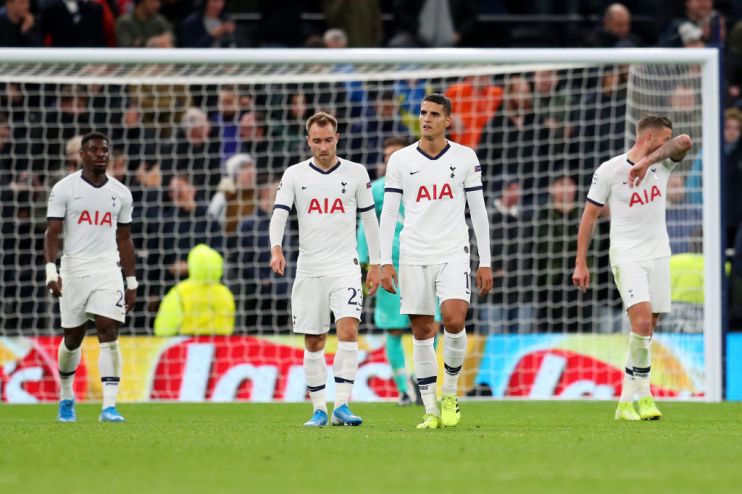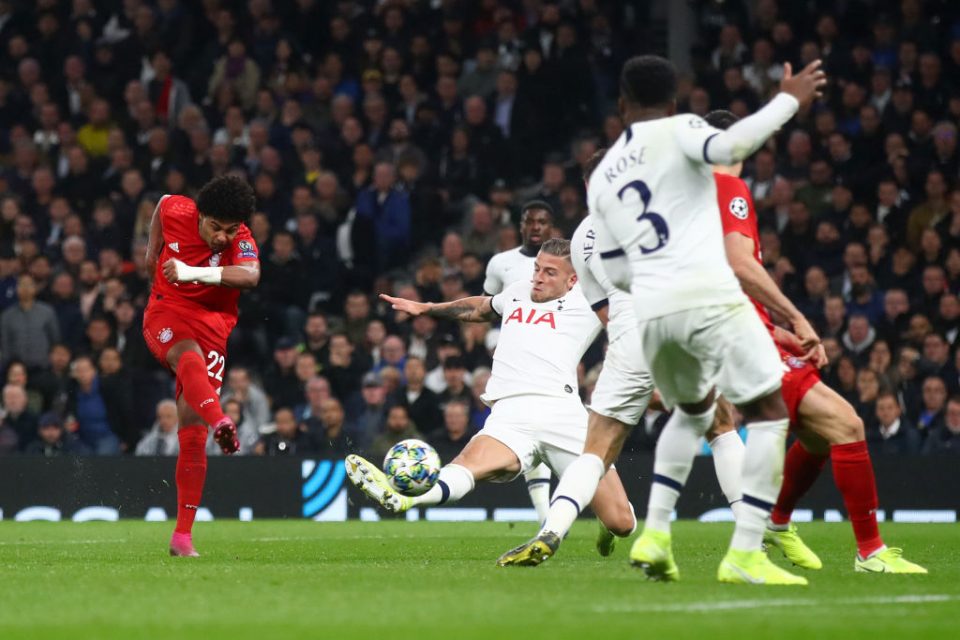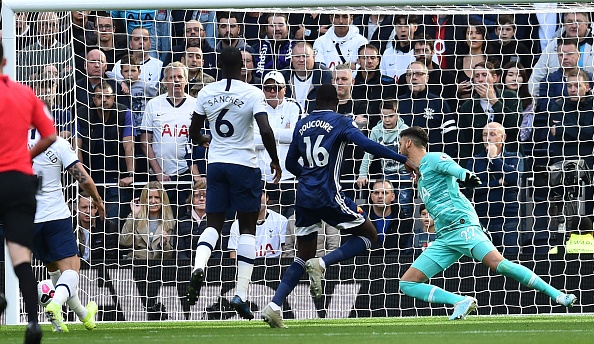Tottenham’s right-back crisis to blame for defensive issues as they keep conceding from crosses

Tottenham resume their Champions League campaign with Red Star Belgrade on Tuesday night on the back of their worst run in recent memory.
They have won just three of their 12 matches in all competitions this season and conceded 22 goals.
The excitement of moving into their new stadium and reaching a first Champions League final last term has evaporated and the weekend’s 1-1 draw at home to bottom of the league Watford merely compounded concerns.
Read more: There is an undercurrent of unrest at Tottenham and the big players are not turning up
Tottenham’s performances have been largely disappointing across the field, but it is in defence that their real issues appear to lie.
They have scored an average of 1.67 goals per Premier League match this season, which is only just shy of the 1.76 they had on their way to third place last year.
Shipping goals
Defensively, however, they are conceding 1.44 goals per league game this campaign, compared with 1.03 last season.
Spurs’ ability to defend well has been the foundation of their rise under Mauricio Pochettino and in 2017/18 and 2016/17 they conceded an average of just 0.95 and 0.68 goals per game respectively. In 2015/16 it was 0.92.

If the seven goals conceded against Bayern Munich and two against Olympiacos are also included in this year’s data, that number increases dramatically to an average of 2.0 goals conceded per game.
So what’s changed?
Of the 22 goals conceded so far this campaign, none have come from corners or free-kicks, suggesting Tottenham’s ability to defend set-pieces, with dominant centre-backs Toby Alderweireld, Jan Vertonghen and Davinson Sanchez, remains intact.
However, eight of those goals have been conceded directly from crosses, with both against Manchester City and Arsenal coming from crosses in open play.
Weak on the wings
Against pin-point deliveries from the likes of Kevin De Bruyne it is perhaps understandable, but the same weaknesses have been exposed in games against Brighton, where Mousa Sissoko was asked to fill in at right-back, and against Watford on Saturday, when Pochettino deployed a back five for the first time this year.
It failed to make the impact hoped as a cross from Gerard Deulofeu cut out all three centre-backs and found Abdoulaye Doucoure, who scored after just six minutes.

Tottenham have regularly struggled down their right hand side this campaign and it is of little surprise given their problem at right-back.
In the 12 games so far they have used five different players in the position: Alderweireld, Sanchez, Sissoko, Kyle Walker-Peters and Serge Aurier.
It is a position where the team have been continually exposed, and while Danny Rose and Ben Davies have fared slightly better on the left, there has been a drop in performance there too.
Other goals have come about indirectly from crosses, with Spurs conceding a penalty against Olympiacos as they struggled to clear back-to-back centres, while against Brighton goalkeeper Hugo Lloris fumbled a deep cross, allowing the Seagulls to score.
Exposed
The right of Tottenham’s defence has also been exposed on other occasions as opponents have cut in from the left. Serge Gnabry caused havoc from Bayern’s left wing in their last Champions League outing three weeks ago and Aaron Connolly, 19, scored in similar fashion on his full Premier League debut for Brighton.

It is hard to avoid revisiting questions about why Spurs let Kieran Trippier join Atletico Madrid in the summer.
Hopes that Walker-Peters or Aurier would fill that void, as Trippier did for Kyle Walker when the latter moved to City, have quickly been dashed.
Pochettino opting for a back five against Watford, meanwhile, suggests he is looking to provide Aurier with extra assistance. In the event, it was Rose not the Ivorian who Deulofeu got the better of.
No pressing
While the self-inflicted issue at right-back is a primary concern, the whole defence must take some responsibility for their inability to clear the crosses they have conceded from, while statistical data indicates that the midfield has also allowed the opposition too much time on the ball.
Read more: Tottenham 2-7 Bayern Munich: Tactical naivety basic errors cost Spurs dear
Under Pochettino, Tottenham had become a high-pressing team, defending as a unit and from the front, much like Liverpool and Manchester City.
Last season, however, the intensity of that press tailed off, with Opta’s “pressed sequences” stats – defined as the opposition losing possession within 40m of their own goal having completed three or fewer passes – falling from 15.6 times per game in 2017-18, the second highest in the league, to just 13.2 last season, the 10th highest in the league, according to data published by The Athletic.
It is a trend that has continued into this campaign and, when combined with their new vulnerabilities at the back, has resulted in them shipping goals with regularity this season.